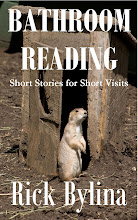Guest Blog: Is 'The End' Really The End?
Query, Synopsis, Pitch,
Logline: Essential Elements and
Differences
The novel written, you take a deep breath and stare
in disbelief at the words on your computer screen: The End. Perhaps you reward
yourself with a drink or a cup of tea. You deserve it. Many wannabe writers
talk about wanting to write a novel, few have the courage (or are crazy enough)
to type ‘Chapter One,’ many will run out of steam by page one hundred, but you have
persevered. Go ahead, enjoy the feeling of accomplishment, because what writers
dread most lies ahead. Can you say query, synopsis, pitch, logline, and not
shudder?
Actually, I’m here to tell you that those four
writer’s tools have gotten a bad rap. So relax while we examine together what
they are, and what each should contain.
1.
Query: There is plenty of information on this subject, and much
conflicting advice. Let’s sort it out. First, do not overthink; use the
inspiration and writing skills that make your novel shine. Since you only have
a few seconds to grab the agent’s attention, open with a powerful hook. Of
course, if you have a strong personal referral or have met the agent, by all
means mention that right away. Follow this with four succinct paragraphs that
cover: (1) why you chose this agent (e.g., she specializes in your genre); (2) the
story line (only the highlights—this is not a plot summary), including the protagonist’s
goal and the main obstacles to reaching it; (3) your potential market and/or
comparison with successful books; and (4) your credentials, focusing on any
prior publications and your motivation and qualifications for writing the book.
2.
Synopsis: How do you distill the essence of your full-length novel into
a one- or two-page synopsis? The temptation is to summarize the plot as if in a
book report, which is guaranteed to make an agent’s eyes glaze over.
Concentrate on the arc of the story, the main events upon which the plot turns,
shedding details of settings and other things that do not entice the agent to
read the manuscript. Make your synopsis a vital selling tool. In your best
writing style let the reader feel with your characters and their conflicts. And
you must reveal the ending, at least in broad terms.
3.
Pitch: This is the blurb you’ll find on the inside flap of a hardcover’s
jacket or on a soft cover’s back cover. It must compel the reader to ask for
more. Think of movie trailers that give you enough to whet your appetite but
not so much as to satiate it. Therefore, the pitch should end with a strong
hook that begs the story question without
revealing the ending. For examples check out my pitches for The Stasi File and its sequel, Teya’s Kiss, as entered in the Amazon
Breakthrough Novel Award (ABNA) in 2011 and 2012, respectively, on my website.
An American lawyer and
his former lover, an Italian opera diva, are drawn into an assassination plot
by a Stasi General desperate to prevent the collapse of the East German police
state after the fall of the Berlin Wall.
And here is the one for Teya’s Kiss:
When a Washington trial
lawyer and a budding opera diva are pressed into searching for a missing
archaeologist in the Santa Fe hills, they not only encounter ruthless
antiquities traffickers, but find their fates intertwined with that of a
shaman’s daughter, who centuries earlier played a crucial role in the Pueblo
Indian Revolt that drove the Spanish from New Mexico.
5.
Differences:
(1) Query - Its purpose
is to capture an agent’s interest so that she will request additional materials
like a synopsis, the opening chapters, or even the full manuscript.
(2) Synopsis - It must
represent your best writing style so as to wow the agent to where she will want
to read the manuscript.
(3) Pitch - You will
most likely use your pitch at a writer’s conference or in a contest like the
ABNA. For an oral pitch, be sure to memorize your three-hundred-word version so
well that you can recite it not verbatim but in a way that feels as if you were
making it up on the spot. In other words, you fake spontaneity.
(4) Logline - It should
be short enough to enable you to spout it off even if awakened from a deep
sleep.
You can appreciate the impossibility of covering
these essential sales tools in detail in this short article. I hope you’ll find
what I’ve stated here useful to get you started on your road to publication.
But no matter what happens, don’t forget to congratulate yourself on the
accomplishment of writing the novel you always wanted to.
Peter Bernhardt, Author, The Stasi File: Opera and Espionage - A Deadly Combination; Quarter
Finalist 2011 Amazon Breakthrough Novel Award; Amazon/Amazon Kindle: Sequel: Teya's Kiss.
http://sedonawriter.tripod.com - http://sedonaauthor.blogspot.com - tweet @sedonawriter
Short Bio: A naturalized U.S. citizen who emigrated at age
23 from Germany, the author served as editor-in-chief of the Tulsa Law Journal. He graduated first in
his law school class. His 25-year legal career included 18 years with the
Department of Justice as the Civil Chief in a U.S. Attorney's Office. Writing
has been a lifelong passion. Teya’s Kiss,
sequel to his first novel, The Stasi File,
will soon be published.












1 comment:
I'm suprised no one else has told you what a helpful blog this is. By confining your comments to the essentials, you've polarised my attention. Yes I 'knew' all this, but in pinning it down to the finer points you've given me food for thought and I'm off to see if I can sharpen up my 'tools', as I will shortly be sending another MS out househunting. :-)
Post a Comment